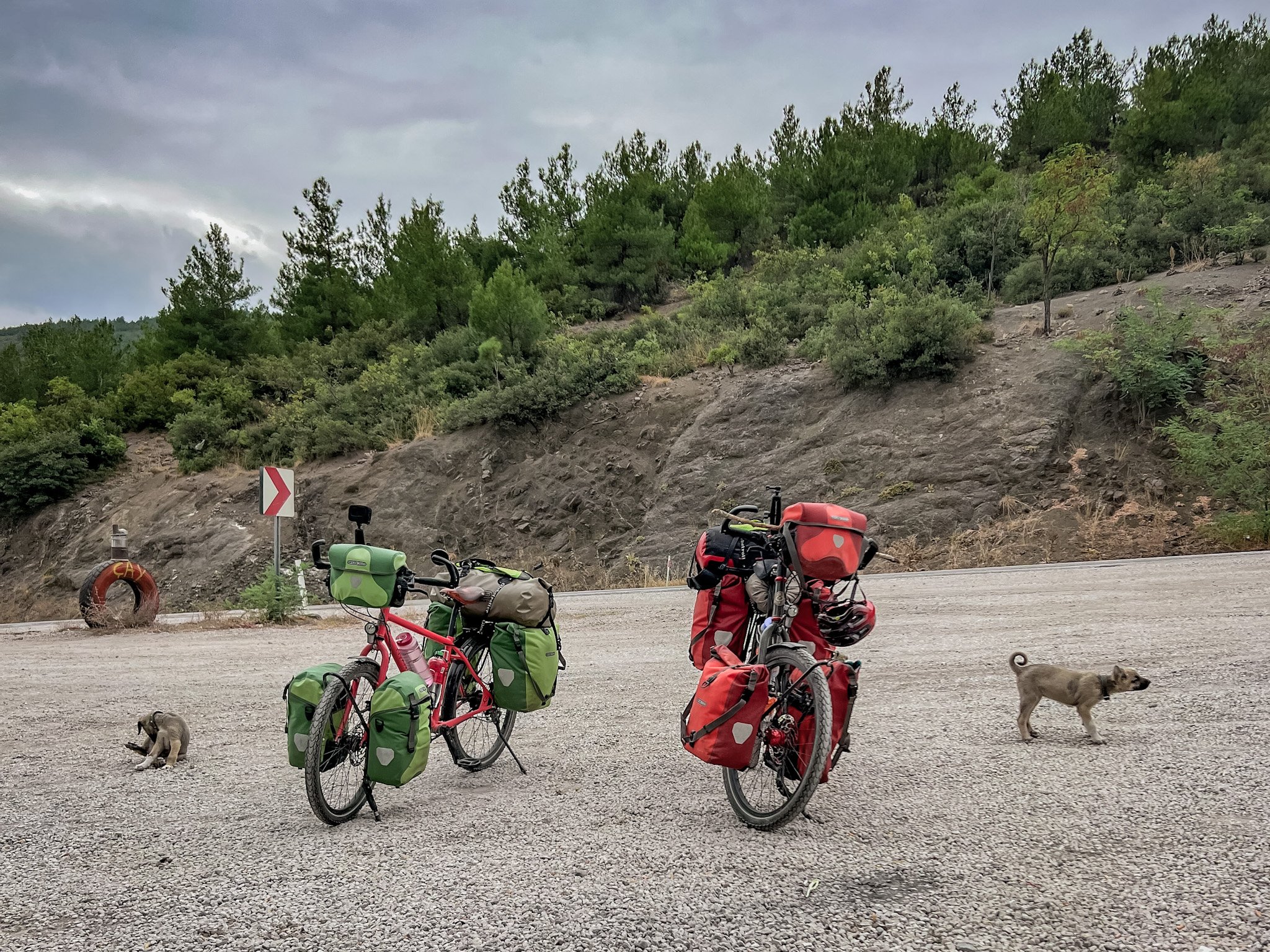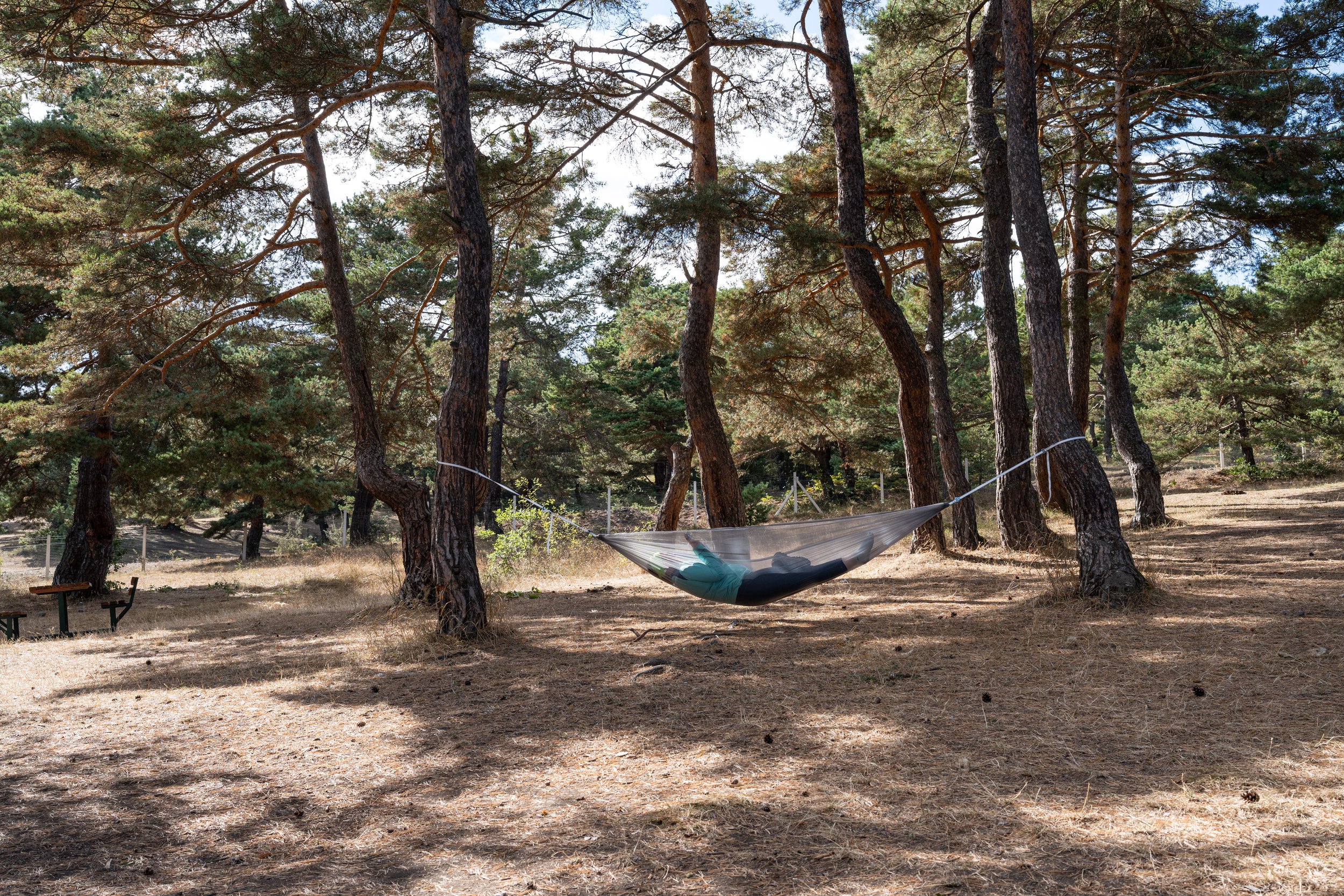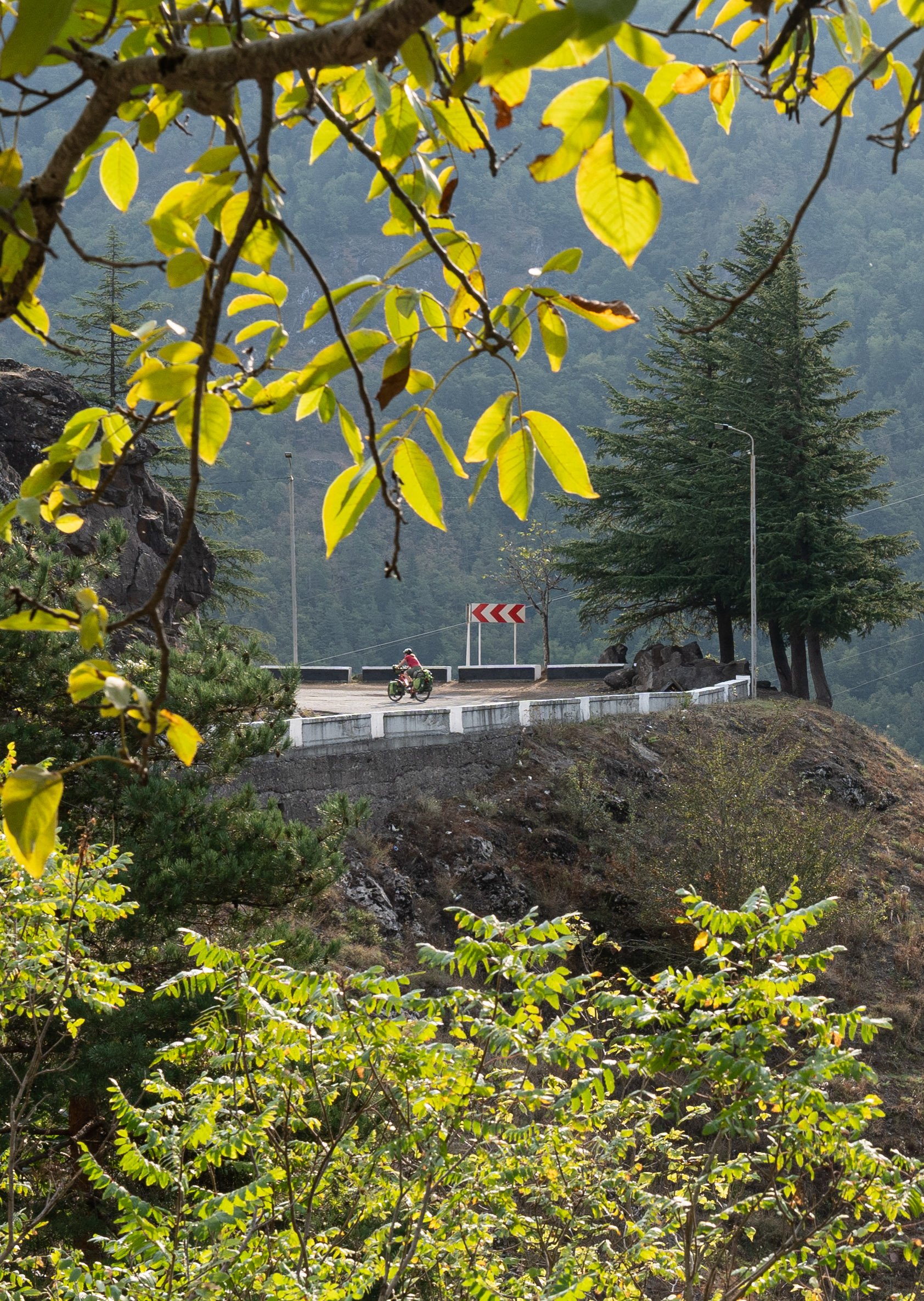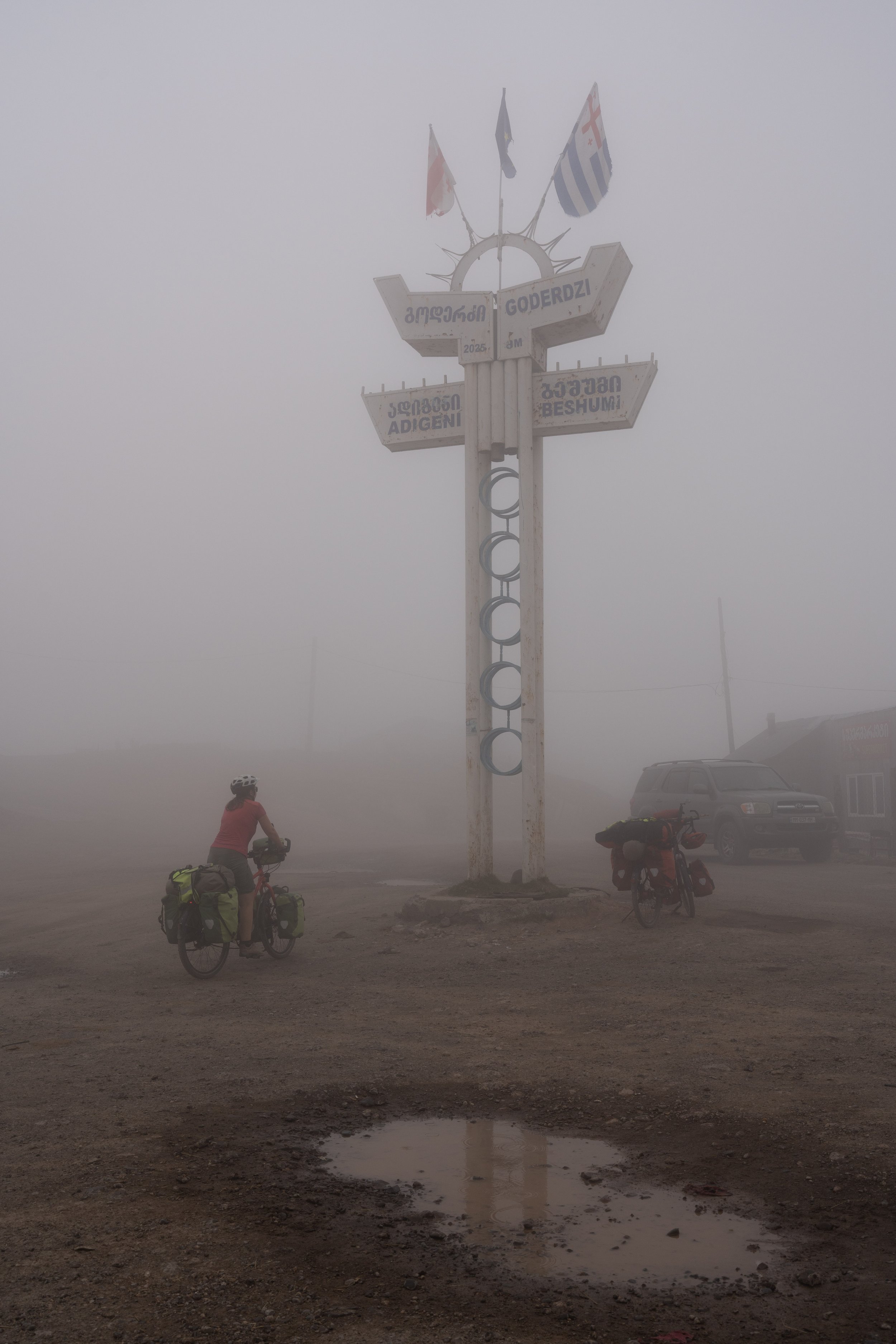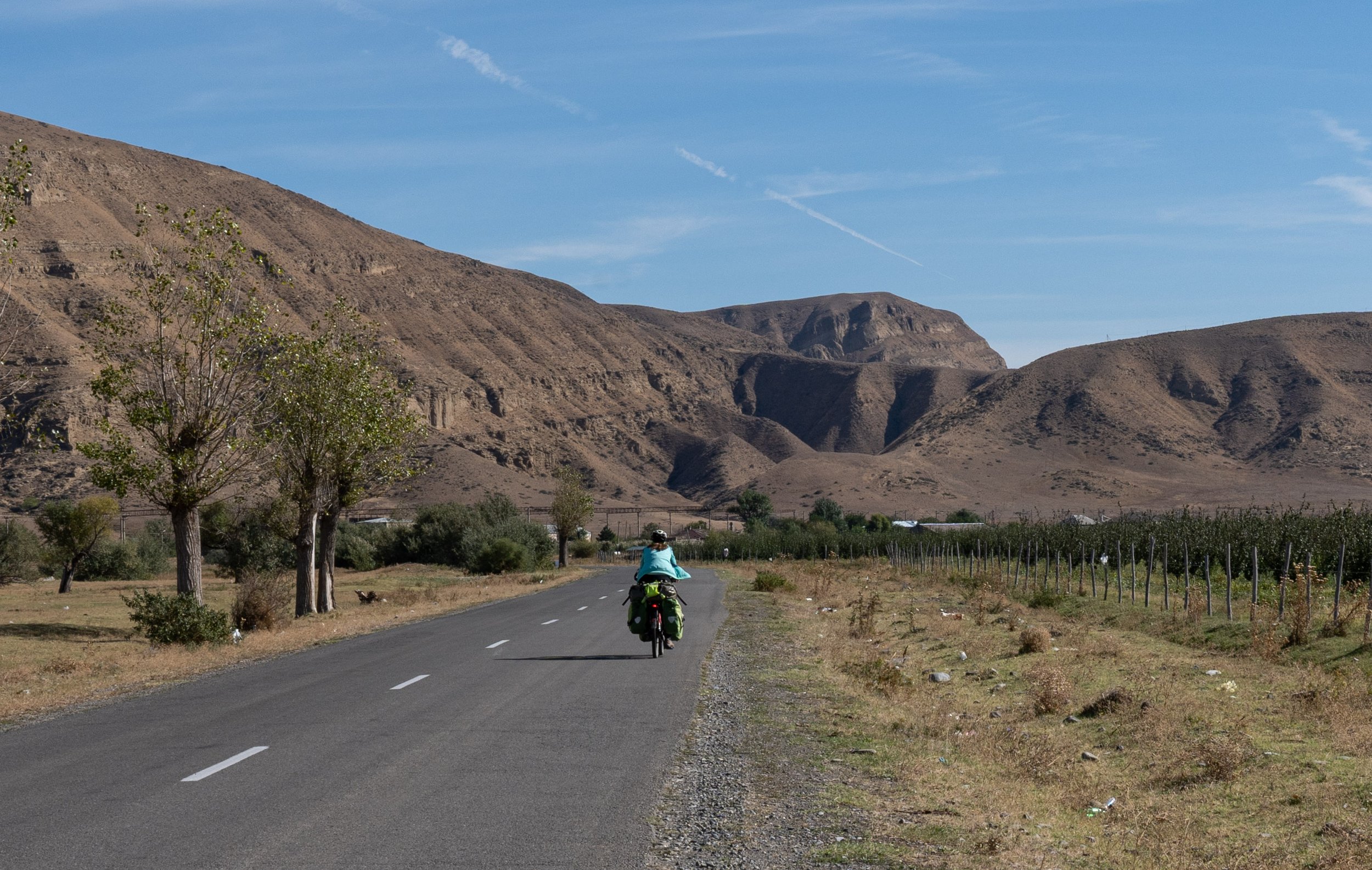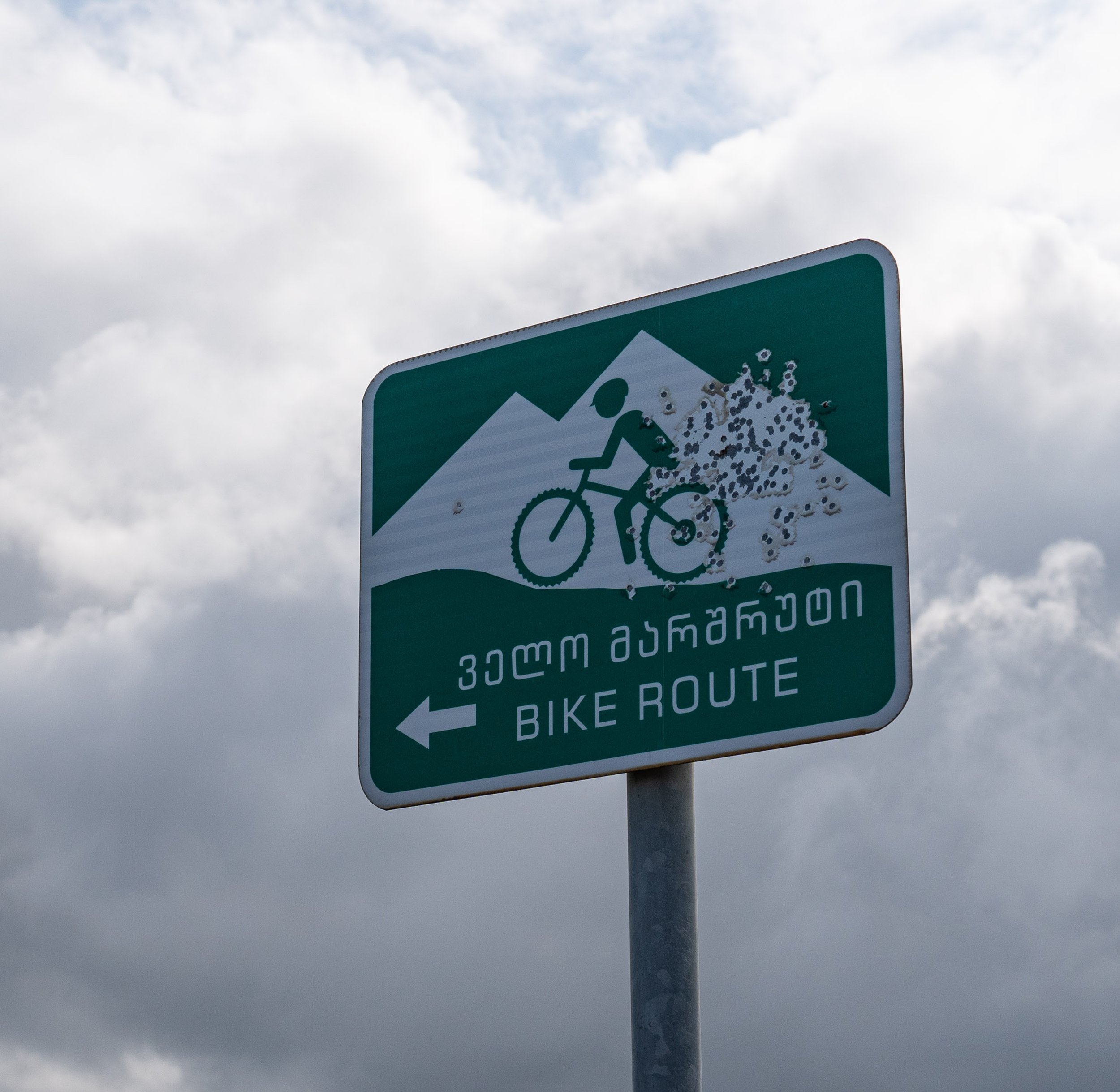From Cappadocia to Tbilisi - Highlands, Black Sea and Georgia's Enormous Diversity
Through the steppe to the sea
After the journey to the caves, valleys and balloons of Cappadocia we were drawn back towards the sea. But first we had to cross some of the steppe landscape in the Anatolian highlands. The roads there were in excellent condition, so we made good progress unless the wind was blowing too hard from the front. On a few days, however, a hot south-westerly wind pushed us very hard, which is why we really shouldn't complain. The scorching sun was also a certain challenge. Nowhere even a small tree to the horizon, no chance to escape. From Tokat in northern Türkiye we enjoyed cycling through a wooded landscape all the more with increasingly pleasant temperatures. Looking back, we were very lucky: We were spared days with over 40 °C (104 °F) and melting asphalt, as reported by other cyclists. The acute midsummer is now over, which is why we hopefully no longer have to fear excessive heat waves! The mountainous landscape north of Tokat (where, by the way, we had the first flat tire of our trip...) is a high contrast to the steppe of the highlands: green fields with tomatoes and other plants everywhere, rows of trees in between and even several canals, bulging with water. At Niksar we then drove down into the wide valley of the North Anatolian Plate. The Anatolian Plate (in the south) and the Eurasian Plate (in the north) scrape each other here. On the descent we really felt cold, a very unusual feeling since Hungary. After Niksar, a climb of a good 1,000 meters (3,281 ft) had to be mastered in order to advance into the Pontic Mountains, which now separated us from the Black Sea. At the top we even had to dig out our hats and down jackets again in the evening. There were still a few smaller climbs to be overcome. At Esentepe we finally saw the Black Sea on the horizon!
Black Sea Coast: in the land of hazelnuts and tea
The descent from the Pontic Mountains now led us through lush green mountain valleys, which are known for the cultivation of hazelnuts, tea and tobacco. We then also saw harvested hazelnuts in vast quantities spread out on the ground at the roadside. And everywhere. On meadows, in parking lots, in driveways, on sidewalks, in playgrounds, and so on... The temperatures were warmer again at the sea (the low temperature at night was still warmer than the high temperature during the day at the top of the pass...), but not uncomfortable. After a day of cycling by the sea, we find a very nice bathing beach in the evening: the sand is fine and the water temperature is really pleasant. A nice reward after crossing the highlands! A little further east we cycled through the coastal town of Ordu. Ordu is practically the world capital of hazelnut production. And even treated himself to a nice bike path along the waterfront! The further journey to the border with Georgia was less varied, since we were traveling on the large coastal road in the “wrong” direction, in particular along the side facing away from the sea. However, along the way there was good fish and the busy shopping streets of Trabzon, where you can really find anything you might need or not need (and fresh hazelnuts of course!). In Trabzon we heard about the escalation in Armenia, which concerns and frustrates us. This will possibly also force us to cycle into Iran via Türkiye instead of via southern Armenia. After Trabzon we reached Rize, the capital of Turkish tea, which was easily recognizable by the trucks loaded with tea leaves. We headed for Mustafa's café in Rize, the owner of the café who is also the chairman of the local cycling club and offers the room above his café for cyclists as a place to stay. On the last stage in Türkiye, a screw on the rear pannier rack on Matthias' bike broke. Unfortunately, we do not carry the drill required for the repair due to weight and space reasons. Lucky in misfortune: a truck is being repaired on the hard shoulder in the opposite direction. After the truck is running again, the mechanic can quickly and easily help us out of a tight spot - Türkiye says goodbye to us with another gesture of great hospitality! Thanks a lot for this! In front of the border to Georgia, trucks are backed up for kilometers in the right lane. We studied the license plates as we cycled past: in addition to many trucks from Azerbaijan and of course Georgia and Armenia, we saw trucks from Uzbekistan, Turkmenistan, Kazakhstan, Tajikistan and Kyrgyzstan - the atmosphere between the last two was perhaps not the best, as there were border fights between the two countries at the moment. All of Central Asia was represented. And trucks from Russia could be seen as well as some from the Ukraine. It's interesting, here they are all waiting in the same line. Somehow, in such a backlog of trucks, all opposites become blurred, which is why the wars and fighting in the countries involved seem even more absurd than they already do.
Georgia: enormous diversity in a small area
Shortly after the border to Georgia we saw the first cow on the road. We were a bit surprised that most of the cyclists we know in Georgia publish photos of cows on the road, now we can understand it better. They are really on every country road here, often in the middle of the asphalt, and let the traffic meander past them calmly and serenely, chewing their cud... For us, this certainly contributes to a somewhat more moderate driving style of the local drivers, who otherwise love the accelerator pedal: In Bulgaria drivers still had to expect a donkey carriage behind every curve, here it is the omnipresent, asphalt-loving cattle. Batumi on the Black Sea coast offers an interesting contrast: in addition to older residential buildings for the local population, huge hotel and casino bunkers of international companies have shot up into the sky. We quickly learn to appreciate the - quite rightly - well-known Georgian wine. And the Georgian cuisine offers numerous dishes that are new to us (excellent stews, very hearty filled breads, hazelnuts strung on a string in grape juice couverture, and much more). Through the valley of the Acharistskali river we drove into the Lesser Caucasus of the Georgian region of Adjara. Due to the long Ottoman rule, a Muslim minority lives here, which is why mosques are still part of the normal townscape. Some of the mountain villages also have mosques in a very simple wooden construction. We drove through a very beautiful gorge with a deeply cut river. Some of the trees were already showing a slight fall color. In the curves up to the Goderdzi Pass, we could see how much altitude we had gained by looking back. Adjara is scenically really worth seeing! The narrow road to the pass seems to be affected by rockfalls, which is why we are happy to have made it through. With the Goderdzi Pass (2,025 m / 6,644 ft) we had reached a rather exciting watershed: we have now left the Black Sea catchment area (and thus the extended Mediterranean-Atlantic system) and are now in the mighty Eurasian endorheic basin, to be more precise in the catchment area of the Caspian Sea. From the top of the pass we were on the road for half a day with the German cyclists Till and Tobi. A kilometer further Christopher joined us, so that the five of us rolled to Akhaltsikhe. The landscape there is rather steppe-like and immediately reminded us of the Anatolian highlands. From now on we followed the course of the Kura river, first through a beautiful narrow valley, then into a wide plain, where we could marvel at the snow-capped peaks of the High Caucasus to the north (unfortunately we were denied a view of Mount Elbrus, as it was too far north-west). The Kura plain between Khashuri and Gori is characterized by extensive agriculture: between small fields and pastures there are always orchards, vineyards, hedges and loose rows of trees. Now and then a wild meadow. Always varied, never monotonous, not trimmed for unconditional efficiency - very nice! Shortly before Tbilisi, the Kura flows through a steppe landscape again before reaching the vibrant and lively capital of Georgia. The city is a tourist magnet with an exciting restaurant and pub culture. We used the stay here to relax, arrange visa stuff and service the bikes. Our impression is that many cyclists arriving from Europe handle it similarly here: Tbilisi is the last outpost to “take a deep breath” before embarking on the great adventures of South or Central Asia...
About cycling on this section
From Cappadocia to the Black Sea: From Kayseri we first followed the D-260 to Hanlı and then the D-851 or D-200 to Yıldızeli. The D-260 has a wide hard shoulder throughout, is in excellent condition and also has relatively little traffic. The D-851 is in a bit worse condition in places, but had really very little traffic when we drove there. The D-850 to Niksar via Tokat was also very easy to cycle: the road condition was generally very good and the traffic density was never uncomfortable. From Niksar (quite a long climb directly after leaving the town), the D-850 is only quite narrow and unfortunately in only moderate condition from Akkuş at the moment, which is why we had to concentrate on the potholes and bumps. On the last 30 kilometers to Ünye on the Black Sea coast, the traffic was uncomfortably heavy and the road very narrow. In the late afternoon there were a lot of small vans on the way from the hazelnut plantations towards Ünye - it might make more sense to avoid this section of the D-850 in the afternoon.
Along the Black Sea coast: From Ünye to the border with Georgia we more or less followed the D-010. This is very busy (all traffic has to go down this one road because the mountains are on the right and the sea is on the left) but mostly (but not always) has a wide shoulder and is in very good condition. Some, but not all, of the longer tunnels can be bypassed on secondary roads. Unfortunately, the hard shoulder is missing in all tunnels. The tunnels are all illuminated from the inside, but it is of course strongly recommended that the bike is clearly visible! By the way, if you have the free choice in your planning in which direction you want to travel the Black Sea coast, you should opt for the variant from east to west (i.e. opposite to ours). Firstly, you cycle right next to the sea and have a beautiful view. Secondly, significantly fewer tunnels have to be cycled through, as some tunnels only exist for the eastbound landside travel direction and for other tunnels the old coastal bypass is only accessible from the coastside travel direction. Thirdly, there are significantly fewer turning lanes to be crossed on the numerous town through roads when driving on the coastal roadway.
In Georgia from Batumi to Tbilisi: On a friend's recommendation, we followed the road east from Batumi to Akhaltsikhe. The road is initially in very good condition and, above all, has very little traffic and is scenic. Approximately the last 30 kilometers to the top of the pass are not paved. The first 20 kilometers of the descent to Akhaltsikhe are also unpaved and unfortunately very muddy in places if it rained in the days before. Until Akhaltsikhe (currently) some extensive road construction sites require patience, in which area you have to drive on quite rough gravel. From Akhaltsikhe the country road to Khashuri was in very good condition, but also a little bit heavier. From Khashuri we followed a smaller country road (always south of the Kura and the highway) via the villages of Khtsisi, Kareli and Skra to Gori. This road was a real cycling highlight: an almost empty, small country road in good condition and without significant gradients through a beautiful landscape! From Gori we followed the smaller road further south of the Kura via Idleti and Dzegvi to the northern edge of Tbilisi. In Tbilisi we had to fight our way through the dense city traffic - preferably along the good main roads. No fun, but not nearly as strenuous as entering Istanbul or Ankara.












